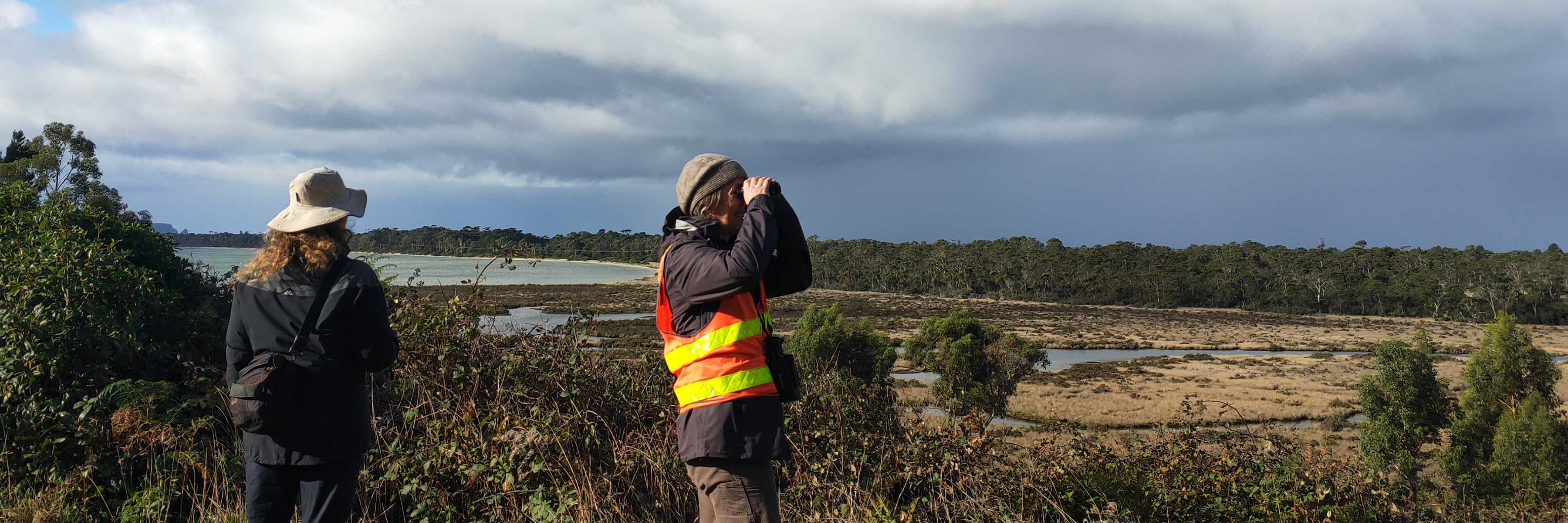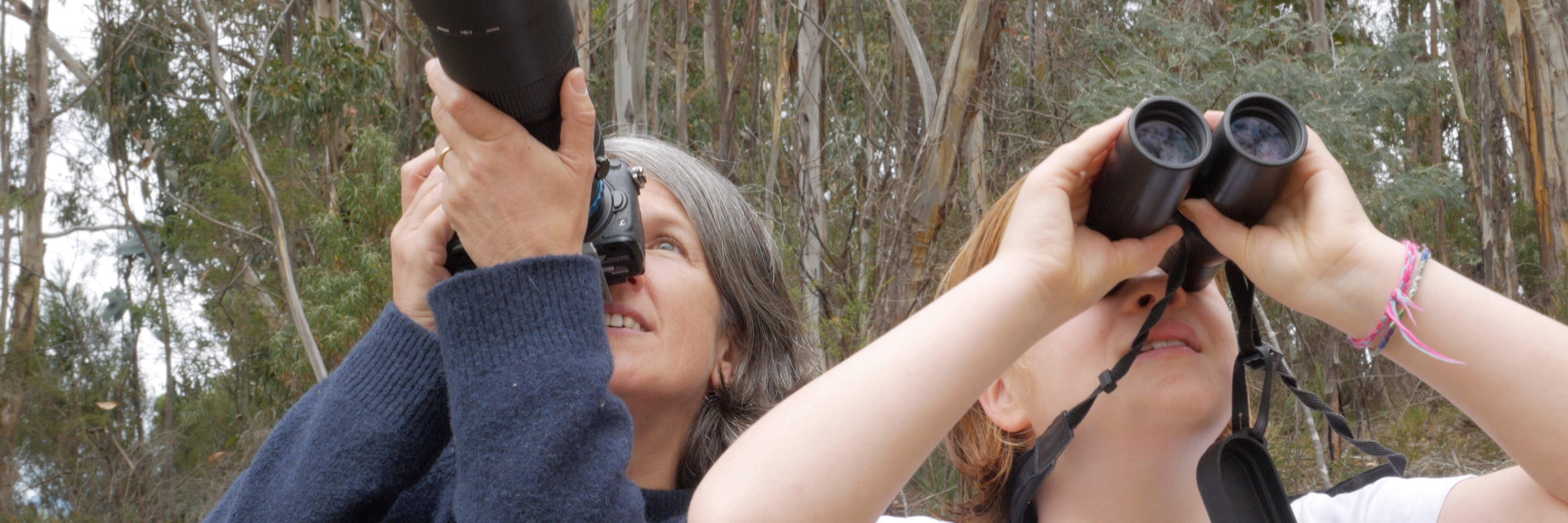Can I survey a different square? On a different date?
We’ve prioritised squares that are widely spaced apart, to get survey data from all common environmental conditions over the state, and to reduce the chances of picking up the same bird in more than one survey square. It’s a ‘snapshot survey’, confined to two weekends each year, to keep everything as consistent as possible — including the number of times we’re likely to count the same bird in different squares.
Some of the squares are quite difficult to get to, but where possible, it’s important to get information from those too. For example, some species might be especially common in such undisturbed areas! Fortunately, many Tasmanians love wilderness adventures…
However, if you want to go to a very undersurveyed area such as the World Heritage Area, where no one else has booked any nearby squares for a long way, and you can’t manage a survey square or the exact dates, do contact us. There occasionally might be a way we can work it out.
Can I change the method? For example, can I:
- survey more frequently than every 30 minutes?
- do all six of my day’s 10-minute-observations from a single site?
- survey earlier than 8 am or later than 4.40 pm?
- split up our team and do simultaneous 10-minute-observations in the same square?
- do fewer than six 10-minute-observations?
Sometimes it might seem much more practical to do something different from what was requested in the instructions, but the principle of this long term survey is for us all to do the same thing, across Tasmania and year after year, to detect genuine population changes. There’s quite a lot of flexibility left to your choices in the method, but these specified requirements are particularly important for consistency.
If I see a bird of prey on another day, should I report it?
This type of information doesn’t help us find out whether the population numbers are changing. We use a strict survey method so that we can compare the proportion of surveys, all carried out in the same way, that detect each bird of prey species each year. However, if you would still like to report your observations, see Report Something.
What does it mean if I don’t see any eagles?
It means you’re a Zero Hero! You might feel a bit unsatisfied, but remember — the zeros are essential, so that we can compare the proportion of surveys that detected eagles each year. The most heroic Zero Heroes are happy to book a squares are where eagles could be less common, to help ensure an accurate overall population assessment. They make sure they’ll have a great day whatever they see, with good company and a great picnic. Of course, the data analyses have to allow for two possible reasons why you didn’t see one: because it wasn’t there, or because you just didn’t happen to see it. There are some clever ways to figure out the likelihood of either option (your zeros are essential for that too). More details in Science. This principle applies to all the species we’re monitoring.
How many surveys are needed?
From the data we’ve all recorded so far, we have an estimate of the number of surveys needed each year in order to detect large and small population changes (details in the 2018–2020 report). For the eagle population, we’re doing enough to pick up large changes from year to year, and smaller changes over multiple years. But the more squares surveyed for at least two days, the subtler the change that we will be able to detect, and the more quickly we will be able to detect it. To achieve a high quality survey for eagles, and also pick up long term population changes for other species, NatureTrackers need to survey and upload good data from at least 100 squares across Tasmania each year, for at least two days. We haven’t quite managed this yet — maybe this year?
What’s the difference between Tasmanian wedge-tailed eagles and the ones on the mainland?
The Tasmanian wedge-tailed eagle Aquila audax fleayi occurs only in Tasmania, and is distinguished by its size — it’s Australia’s largest bird of prey — and its wedge-shaped tail. Unlike the mainland wedge-tailed eagle, it’s listed as threatened (category Endangered), and is especially sensitive to disturbances when breeding, even across many hundreds of metres from its nest. Read more about it in the Threatened Species Link.
How can we be sure that everyone is identifying the birds correctly?
It’s important that we can rely on the findings. No large-scale survey is likely to result in 100% perfectly-identified species, but we can aim for a low risk of error, and also a calculation of that risk so that we can take it into account. Firstly, there are resources on the website to help everyone upskill in advance, and test themselves, and we often run workshops. If you’re skilled yourself, please do help train up people in your area! Next — we have the option in the data entry for people to categorise how confident they are in their identification (so they don’t feel forced to commit to an identification they’re unsure of). Finally — we ask NatureTrackers to send in photos of the birds they saw during their surveys, and see how consistent their identifications are with those of raptor experts. We only have limited information so far, but encouragingly the error rate has been very low. Read more in the 2018–2020 report.
I’m concerned that something is happening in my area, that might affect birds of prey…
- Can Where? Where? Wedgie! pick this up? The survey is designed to detect state-wide population changes, and so would pick up any major impacts on the species. The more data, the smaller the changes that can be detected. With enough data over long periods, it may detect regional impacts.
- What else can I do? See information on the Threatened Species Link.

